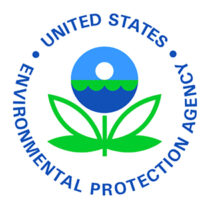WASHINGTON – Today, June 10, the U.S. Environmental Protection Agency published water quality screening values under the Clean Water Act related to short-term concentrations of 6PPD and 6PPD-quinone (6PPD-q). These chemicals have been found in freshwater ecosystems and linked to runoff from automotive tire dust and debris. Once in freshwater, these chemicals are known toxins that can quickly cause fish-kill events. The EPA’s non-regulatory and non-binding screening values provide information that Tribes, states, and local governments can use to monitor their waterways and help protect aquatic life from these harmful pollutants.
“Achieving clean water that protects aquatic life and supports commercial, recreational, and cultural fishing practices takes partnership at all levels of government,” said EPA Acting Assistant Administrator for Water Bruno Pigott. “6PPD and 6PPD-q can be lethal to fish, so it’s important we know where it’s polluting waterways. The EPA’s screening values provide important information that our partners can use to protect fish populations—especially coho salmon on the Pacific coast. Solutions like stormwater treatment and green infrastructure are effective at reducing concentrations of these chemicals in freshwater ecosystems.”
This is the latest in a series of EPA actions to better understand and reduce freshwater aquatic life exposure to these harmful chemicals. In November 2023, the agency committed to consider establishing regulations prohibiting the manufacturing, processing, use and distribution of 6PPD in tires and also announced its intent to publish an advanced notice of proposed rulemaking under the Toxic Substances Control Act (TSCA). The EPA also announced plans to finalize a rule to require manufacturers (including importers) of 6PPD to report lists and copies of unpublished health and safety studies to the agency. In January 2024, the EPA announced the publication of a draft testing method to help Tribes, states, and key stakeholders determine where and when 6PPD-q is present in local stormwater and surface waters. In March 2024, the agency announced investments in the state of Washington to help treat and control stormwater runoff that can contain 6PPD and 6PPD-q.
The EPA’s screening values are based on the latest scientific knowledge about the short-term toxicity of 6PPD and 6PPD-q to freshwater aquatic life. Based on current science, the agency believes that concentrations of 6PPD and 6PPD-q at or below these screening values are likely to protect freshwater aquatic life. The EPA’s recommended screening values are not regulations and they do not impose any legally binding requirements.





